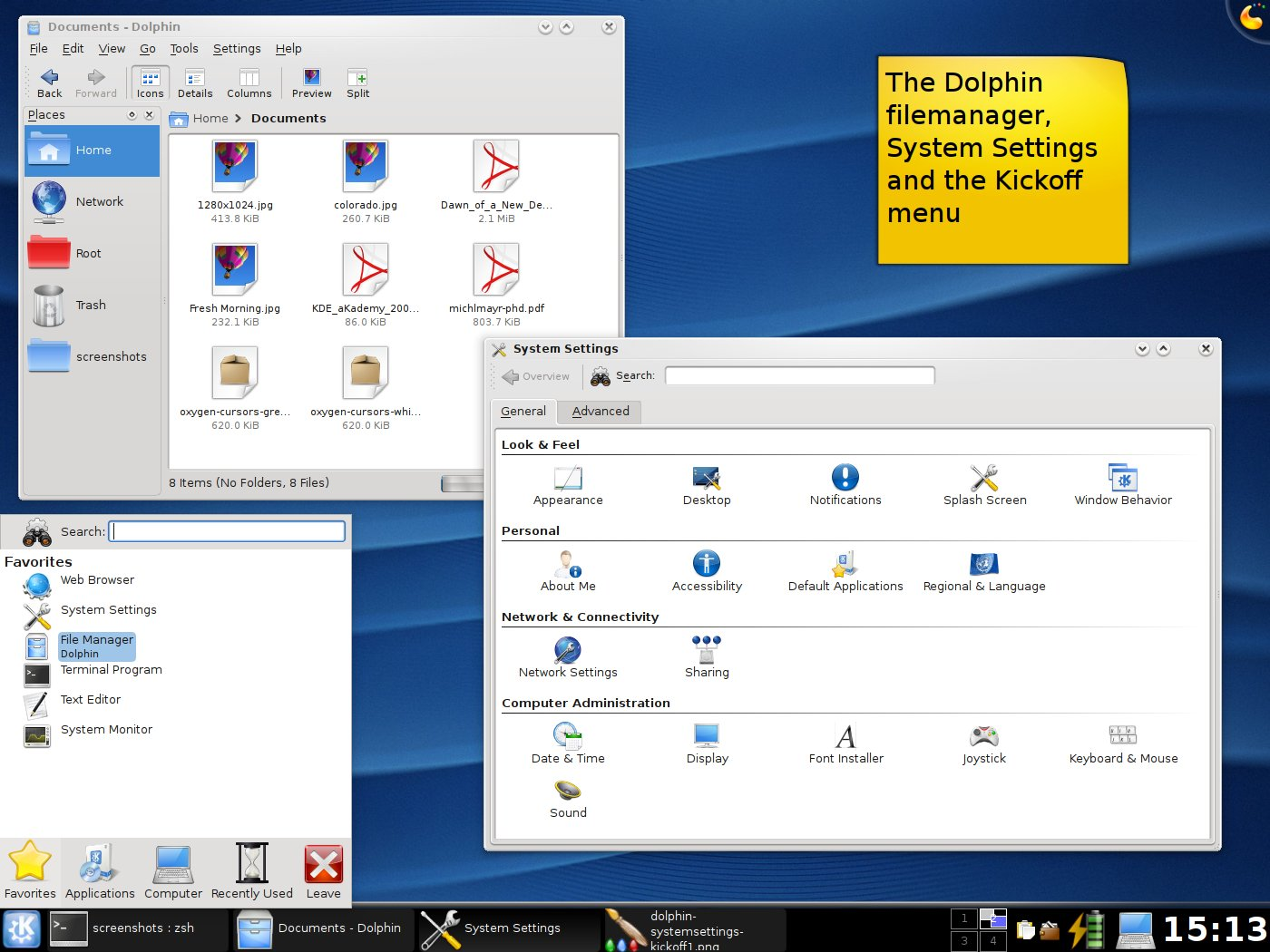KDE: your UNIX easy
My first Desktop Environment on GNU/Linux was KDE 2, at university laboratory. At that time I didn't have a computer powerfull enough to double-boot Windows 95 and a distro, but I read a lot, fascinated by FOSS philosphy.I was KDE fanboy: I am still convinced that big projects as a desktop environments must be programmed with an object-oriented language. KDE uses C++, while Gnome works in C. This difference was visible in first years of 2000: KDE was fast, fascinating and colorful, while Gnome and its applications were gray and old-looking.
When KDE3 was released I run it on my new Pentium IV 1200 with 512MB, looking admired that environments, far advanced from Windows XP. Many friends of mine were surprised by KDE3, its themes and its applications (Kopete, Konquerror, Kircand KOffice), making it very near to Mac OS X.
On 2002, the Liquid theme (made by Mosfet), was a wonder.
KDE 4 Revolution
Since Matthias Ettrich foundation, KDE was a well engeneered project. Ettrich did many analysis to optimize user experience, expecially about memory use.KDE 4 was a "revolutionary" project: its developers wanted to change the usual "desktop paradigm", introducing a engine which runs many "plugin" (called "plasmoids"). You can still have a "desktop" with your folders: it's a "plasmoid" which will show you your $HOME/Desktop folder big as your monitor.
KDE4's underlaying platform is a programming masterpiece: there are base libraries well organized (Phonon, Solid, KIO, Plasma, KParts and others) and well integrated all togheter, but... take a look to these two screenshots
 |
 |
| KDE 4 | Enlightenment 17 |
Well... there's something not very clear to me: Enlightenment 17 is a "yet not finished" project, but you can test it. It's written in C and it's very fast and light. So light to move some producers of embedded devices to run E17 on their products.
KDE4 is big, heavy and does E17 same things.
Looking to Gnome, I see a lighter DE, fast and nice looking. Its technology is not refined as in KDE, but Gnome does its job very well. It's usable and I can be productive with it. One year ago I tryed both KDE4 and Gnome: after some "Wow! Amazing!" I used Gnome because I can "do things", while KDE4 seemed to me a "useless videogame".
The Future
Gnome is the most widespread DE thanks to its usability. Its Human Interface Guidelines were the secret of its success. KDE, instead, worked too much on its underlying technology, making it «the Java of Desktop Environments»: well designed, well documented, well thinked, not very usable.KDE has to rethink its structure, moving the user-experience as center of its universe, continuing to host great applications and (maybe) trying to take a diet.

No comments:
Post a Comment